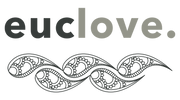Common Synthetic Chemicals & Why We Avoid Them
As a family business, we are keen label readers. We choose ingredients very carefully. A lot of products we use everyday are filled with toxic chemicals, especially cleaning products.
Here are some ingredients that we avoid in our products because they can be toxic and are commonly found in cleaning products.
SULPHATES
Petroleum-derived foaming agents in shampoo, body wash, hand wash and laundry detergent which can cause skin irritation, rashes and allergic reactions with links to organ toxicity and hormone disruption. Usually listed as: Sulphates, sometimes listed as SLS or SLES
BLEACH
Bleach is a generic name for a wide range of synthetic chemicals used to remove colour. It is often used in products like laundry detergents and bathroom cleaners. They are harsh and irritate your eyes, skin, lungs and severely harmful for people suffering from asthma or other breathing problems. What's worse is that it doesn't really clean, it simply changes the colour to white by removing any colours on the surface where it is used. Usually listed as: Sulphates, sometimes listed as ingredients that end with "peroxide".
SYNTHETIC COLOURS
Artificial colours can be found in personal care products and are derived from petroleum, coal tar or heavy metals. Can increase the risk of irritation, blocked pores, breakouts and sensitivity. Usually listed as: Colours, Synthetic or artificial colours
METHYLISOTHIAZOLINONE
A preservative found in ‘natural’ products such as baby wipes, mouthwash, hand cream, makeup and cleaning products - reported to cause mild to severe skin irritation. Usually listed as: Methylisothiazolinone, Methylchloroisothiazolinone
SYNTHETIC FRAGRANCE
Used in a wide range of products as ‘fragrance’ or ‘parfum’. Derived from petrochemicals and known to cause skin irritation along with serious illness such as asthma, fertility issues and hormonal interference. Usually listed as: Fragrance or parfum
TRICLOSAN
A well-known environmental toxin used for its anti-bacterial properties, often found in hand wash, hand sanitiser and even some toothpastes. Linked to skin irritation and interference with hormone function. Usually listed as: Triclosan
Poly Ethylene Glycols
Used in personal care products such as shampoo, body wash and soap to make the ingredients softer on the skin. During their creation, products are contaminated with 1,4-dioxane - a well known carcinogen. Usually listed as: PEG, anything ending in '-eth' or 'ethylene glycol'
PHENOXYETHANOL
A synthetic preservative used to extend shelf-life in products. Very toxic in high doses with the potential to cause damage to brain cells and the nervous system. Usually listed as: Phenoxyethanol
QUATS
Quaternary Ammonium Compounds are used in fabric softener to make garments more plush. Known to trigger or worsen asthma and are thought to interfere with our reproductive system. Usually listed as: Products advertised as anti-bacterial without any specific ingredient
PHTHALATES
Used in products to help synthetic fragrance last longer. A well known endocrine disruptor, linked to obesity, birth defects, fertility issues and asthma. Usually listed as: Fragrance or ‘...phthalate’
